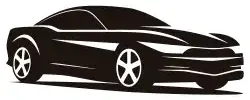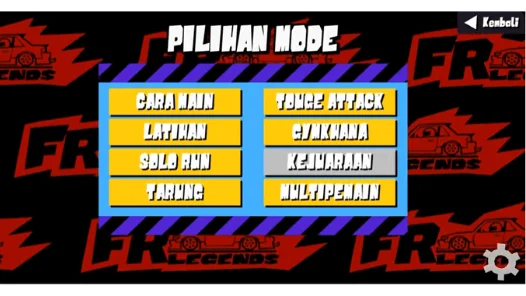Mastering Drift Perfection: Optimal Tire Configurations in FR Legends for Pro-Level Slides
Demystifying Tire Tuning in FR Legends
In the high-octane world of FR Legends APK, tire tuning is the secret sauce that separates casual sliders from drift masters. This mobile Best Tire Settings in FR Legends drifting gem lets you customize everything from engine swaps to body kits, but getting your tires dialed in is crucial for initiating, sustaining, and linking those buttery-smooth angles. Whether you’re battling AI in tandem duels or chasing high scores on iconic touge runs, understanding tire customizations unlocks the physics-based magic that makes every drift feel authentic. Keywords like “FR Legends tire tuning” and “drift tire optimization” are your entry point to elevating your game—let’s break it down without the fluff in the mystery of Best Tire Settings in FR Legends.

Pro-Grade Tire Configurations for Best Tire Settings in FR Legends
Diving straight into the meat: what are the sweet-spot settings for expert drifting? These recommendations stem from community-tested tweaks and real-world-inspired physics, focusing on balance between grip, slide initiation, and control. Experiment in practice mode, as car choice (like a tuned Fr legends Supra or Civic) can influence fine adjustments.
Dialing In Tire Pressure for Maximum Control
Tire pressure dictates how your rubber interacts with the asphalt—too high, and you will snap out of drifts; too low, and you’ll wallow like a novice. For expert FR Legends drifting, aim for:
- Front Tires: 28-32 PSI—This range boosts steering precision and entry stability, letting you feather the throttle into corners without understeer. It’s a go-to for tight tongue sections where quick corrections are key.
- Rear Tires: 24-28 PSI – Lower pressure here promotes easier breakaway for power slides, enhancing that raw, controllable oversteer feel. Pair it with your FR layout for seamless transitions.
Pro tip: Start at 30 PSI front/26 PSI rear on stock cars, then tweak based on track feedback. Low rear pressure mimics real fast drifting cars by increasing sidewall flex for better heat buildup and slide forgiveness.
Selecting the Ideal Tire Compound
Not all rubber is created equal in FR Legends—your compound choice affects wear, grip thresholds, and visual flair. Skip the slicks for drifting; they cling too hard.
- Street Tires (Recommended for Most Builds) – The ultimate bang-for-buck option with balanced grip loss, perfect for chaining drifts without instant spin-outs. They shine on mixed surfaces and look killer on wide-body setups.
- Formula Drift or Semi-Slick Tires – For touge pros, these offer sharper initiation but demand throttle finesse. Use on high-speed tracks to maintain angles longer.
- Avoid: Full Race Tires—Too grippy for pure drifting; save them for grip events.
Keywords: “FR Legends street tires drifting”—they’re forgiving for building muscle memory while scoring big in judging-based runs.
Fine-Tuning Toe Angles for Drift Precision
Toe settings control your car’s straight-line stability and turn-in response—subtle but game-changing for linking corners.
- Front Toe: 0 to -0.5 degrees (toe-out) – Encourages quicker pivot into drifts, reducing lag on entry. Ideal for expert lines where you need to nose the car aggressively.
- Rear Toe: 0.5 to 1 degree (toe-in) – Stabilizes the tail during slides, preventing fishtailing. This setup shines in long, flowing drifts, keeping your angle locked.
Overdo toe-out, and you’ll fight snap-oversteer; keep it mild for that pro-level composure. Keywords: “toe settings FR Legends drift control.”
Optimizing Camber for Cornering Bite
Camber tilts your wheels to maximize contact patch during leans—essential for maintaining speed through banked turns.
- Front Camber: -1.5 to -2.5 degrees – Negative camber here improves turn-in grip without sacrificing straight-line speed, crucial for FR cars prone to push.
- Rear Camber: -1 to -2 degrees – Less aggressive to promote rear slide initiation while ensuring even wear in prolonged drifts.
Static camber affects ride height too—lower it for a planted feel, but watch for bottoming out. Community consensus: Camber tweaks are subtle in FR Legends compared to height, but they polish your runs. Keywords: “camber optimization drifting FR Legends.”

The Game-Changing Role of Tires in FR Legends Physics
Why obsess over tires? In FR Legends’ realistic sim-style engine, they govern traction thresholds, heat generation, and wear—directly impacting your score multipliers for angle, line, and clipping points. Poor setups lead to early spin-outs or clipped scores; dialed tires let you hold 60+ degree slides effortlessly, turning 80% runs into 95% perfection. It’s not just setup; it’s strategy—tires amplify your inputs, making every pedal mash and countersteer feel rewarding. Master this, and you’ll dominate leaderboards.
Tailoring Tire Setups to FR Legends Tracks
One-size-fits-all? Nah—adapt or eat barriers.
- Touge (Mountain Passes like Akina): Low rear PSI (24-26) with street tires and slight front toe-out for hairpin precision and recovery speed.
- Circuit Tracks (Ebisu Style): Bump fronts to 30-32 PSI, and add rear camber (-1.5) for sustained high-speed arcs.
- Open Drifts (Wide Roads): Semi-slicks with balanced toe (0 degrees) to prioritize flow over quick snaps.
Test in free roam: Keywords like “track-specific tire tuning FR Legends” reveal hidden gems from pros.
Wrapping Up: Slide into Mastery
Nailing tire settings in FR Legends isn’t about perfection on day one—it’s iterative testing that hones your drift intuition. Start with the baselines above, log your runs, and tweak for your style. Soon, you’ll be the one sharing setups that leave others in the smoke. Fire up the game, hit practice, and claim those expert scores. What’s your go-to build? Drop it below.
FR Legends Drifting FAQs: Quick Hits on Tire Mastery
Q: Do tire settings affect score multipliers?
A: Absolutely—optimized tires sustain longer angles and cleaner lines, boosting your judging totals by 10-20%.
Q: Best tires for beginners vs. experts?
A: Newbies: Stock/street for forgiveness. Experts: Semi-slicks with low rear PSI for razor-sharp control.
Q: How often should I adjust for mods like engine swaps?
A: After every major power upgrade, more torque demands lower rear pressure to avoid wheelspin.
Q: Can camber fix understeer in FR cars?
A: Yes, -2 degrees front camber sharpens turn-in without killing driftability.
Q: Tires vs. suspension: Which matters more?
A: Tires set the foundation; suspension refines it. Tune tires first for 70% of your gains.




